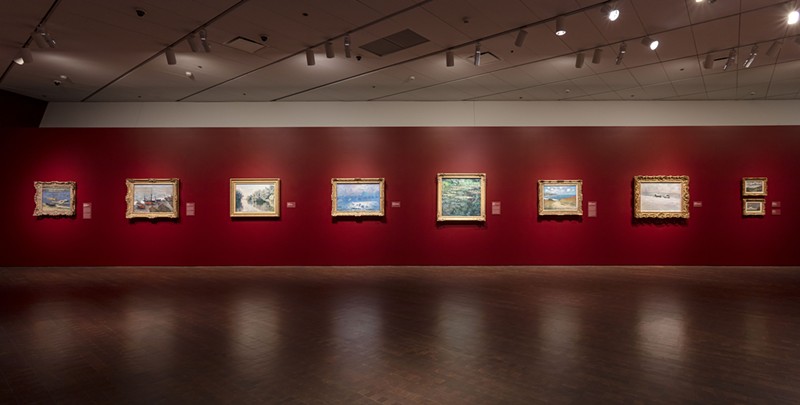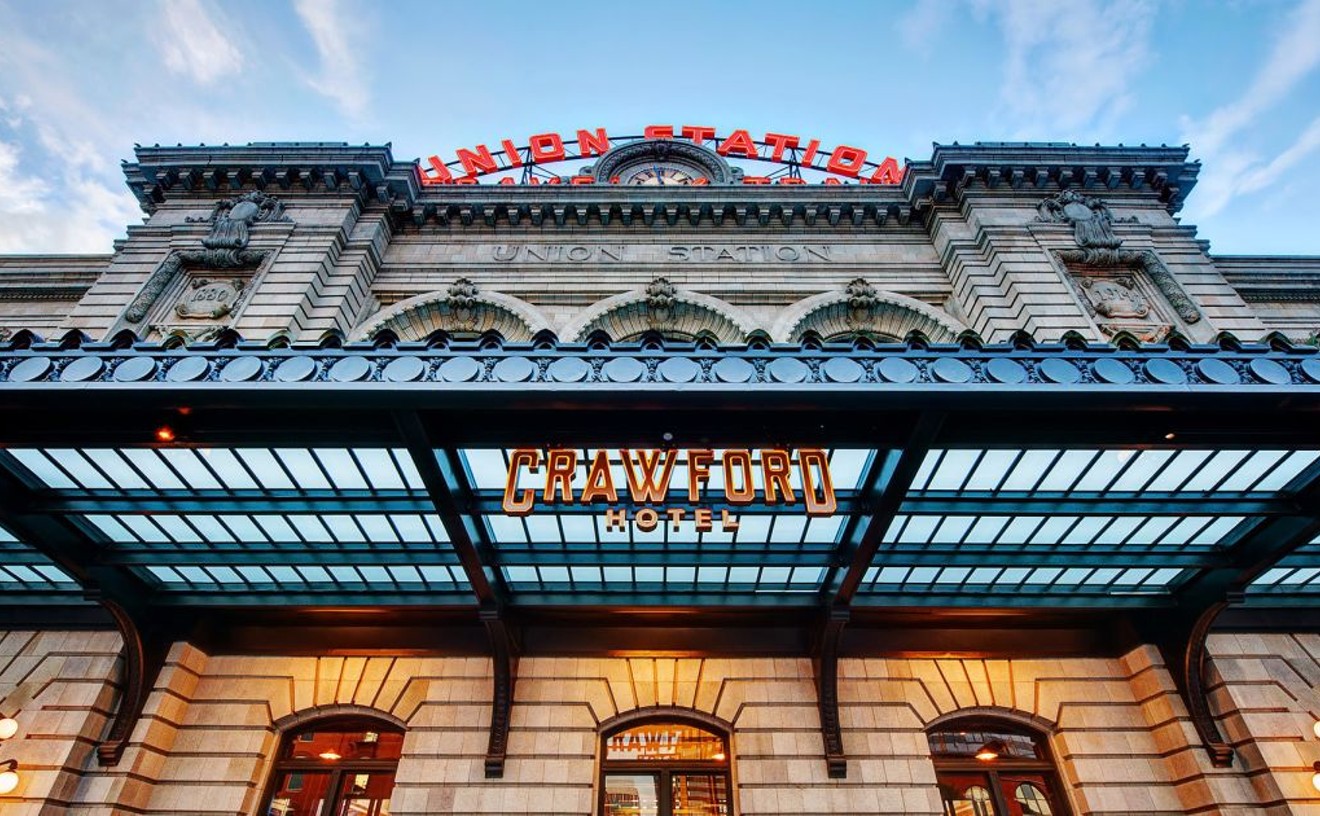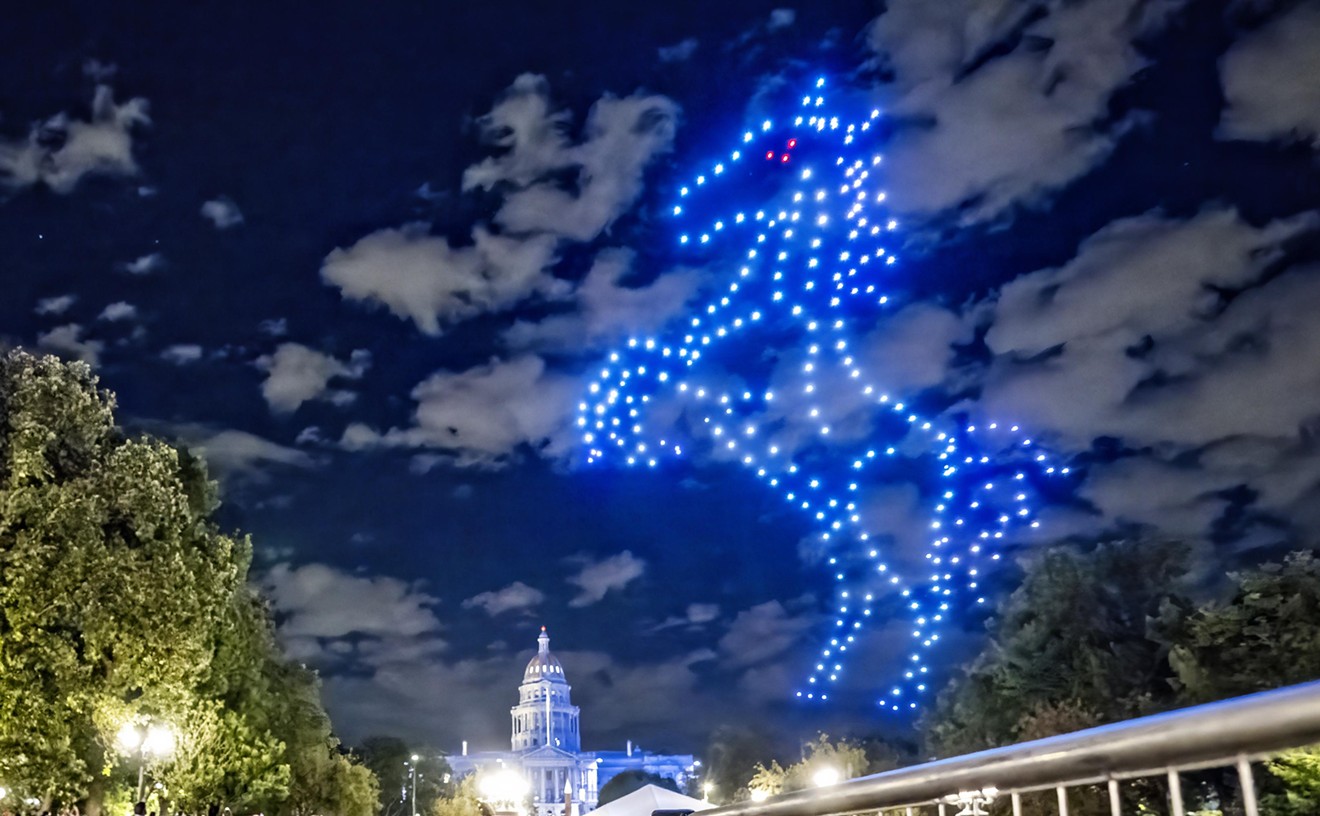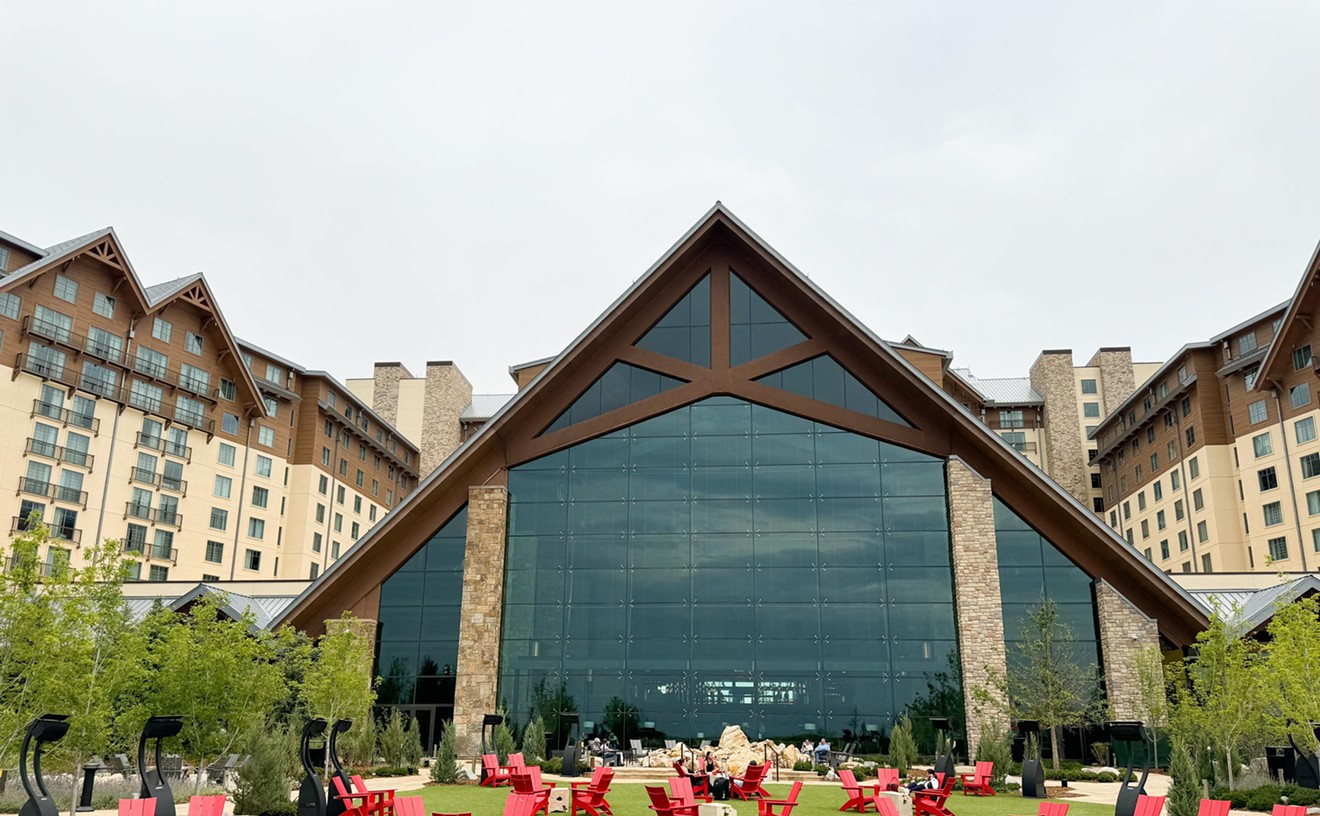“In art,” notes Angelica Daneo, the DAM’s chief curator and curator of European art before 1900, “the nineteenth century began with a craze for antiquities and ended with a march toward abstraction, a shift so groundbreaking that there is hardly anything in comparison from centuries past.” The show has been installed on the second level of the Hamilton Building, where for many years the art of the American West was on display, but which will now be a permanent home for nineteenth-century paintings and sculptures.
The complex warren of rooms is bisected by a broad open corridor leading to the bridge connecting the Hamilton Building to the Martin Building, which is closed right now because of pandemic restrictions; currently, visitors can only enter 19th Century European and American Art from the Hamilton side.
Daneo has split the works into a half-dozen separate groups, organized not only stylistically, but also according to other categories like landscapes or portraits. While she’s interested in artistic development over time, these groupings are not strictly chronological; however, pieces made toward the late 1800s are located at the Hamilton end of the display, and works made toward the century’s beginning are on the Martin end. For now, visitors necessarily go through the show backwards.
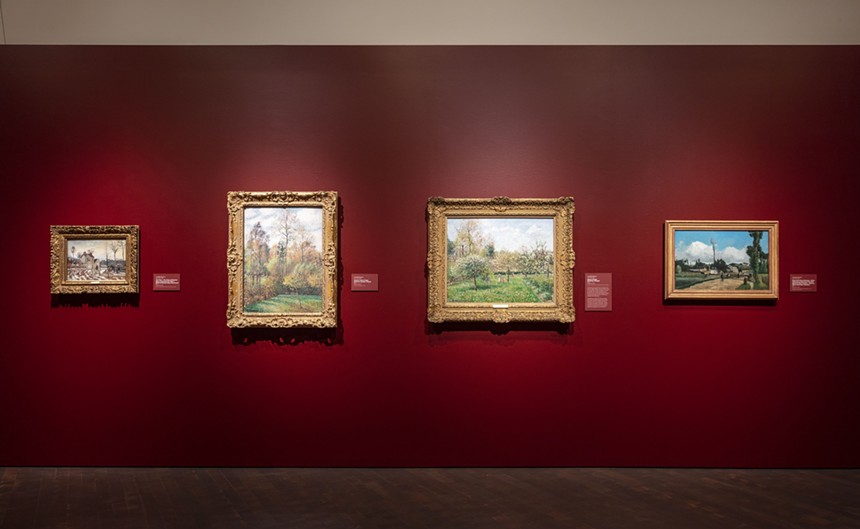
A quartet of Camille Pissarro landscapes in 19th Century European and American Art at the Denver Art Museum.
Courtesy of the Denver Art Museum
Daneo selected the works with a focus on French art, which makes sense, because Paris was, at that time, the center of the international art world. However, the exhibition also includes pieces by artists from other parts of Europe, as well as a few from the United States who were influenced by what was happening in France. The roster constitutes a who’s-who list of art stars, some of whom, like Degas, Toulouse-Lautrec and van Gogh, will be familiar names to just about everyone.
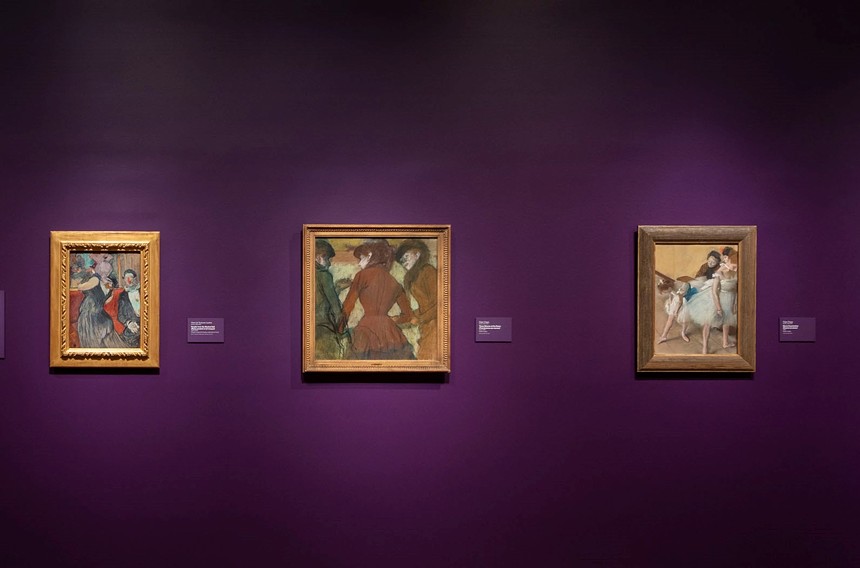
“Respite From the Masked Ball” (left), by Henri de Toulouse-Lautrec, and “Three Women at the Races” (center) and “Dance Examination” (right), both by Edgar Degas, in 19th Century European and American Art at the Denver Art Museum.
Courtesy of the Denver Art Museum
“The museum acquired Monet’s ‘Waterlilies’ in 1935,” Daneo says, “just nine years after Monet died, before his waterlily paintings were even appreciated.”
In recent years, significant additions have been made, notably the Frederic C. Hamilton Collection of Impressionist art. As DAM director Christoph Heinrich points out, it was a chance to display all 22 of the paintings donated by Hamilton, for whom the building is named, which have not been exhibited together since the late benefactor made the gift in 2014. At that time, Hamilton told me that he hoped that someday his collection would be installed permanently in his namesake building, and this gallery makes that late-life wish a reality.

Bouguereau’s “Idylle Enfantine” (left) and Eva Gonzalès’s “The Window” (right) and a bust by Carrier de Belleuse in 19th Century European and American Art at the Denver Art Museum.
Courtesy of the Denver Art Museum
Also notable are the two Monet landscape drawings from the Esmond Bradley Martin gift. This addition to the DAM’s already impressive Monet holdings allowed Daneo to make the grand gesture of covering an entire wall with his breathtaking work. To create this spectacle, the Martin drawings are brought together with the four choice Monets that came in through Hamilton’s largesse, plus the two full-fledged masterpieces of the collection: the aforementioned “Waterlilies” and another Monet acquired in 1935, the “Waterloo Bridge”.
Impressionism is just a part of the story, and there are also the realist landscapes by the Barbizon School artists, including a moody landscape under overcast skies by Corot, “Ville d'Avray,” and the more lyrical sunny views, “Paysage,” by Jules Dupré, and “Paysage au bord de rivière,” by Charles François Daubigny. And Daneo hasn’t left out the proper academic painters, either, including the museum’s famous Bouguereau, “Idylle Enfantine,” depicting two little rosy-cheeked peasant girls sitting in a field.
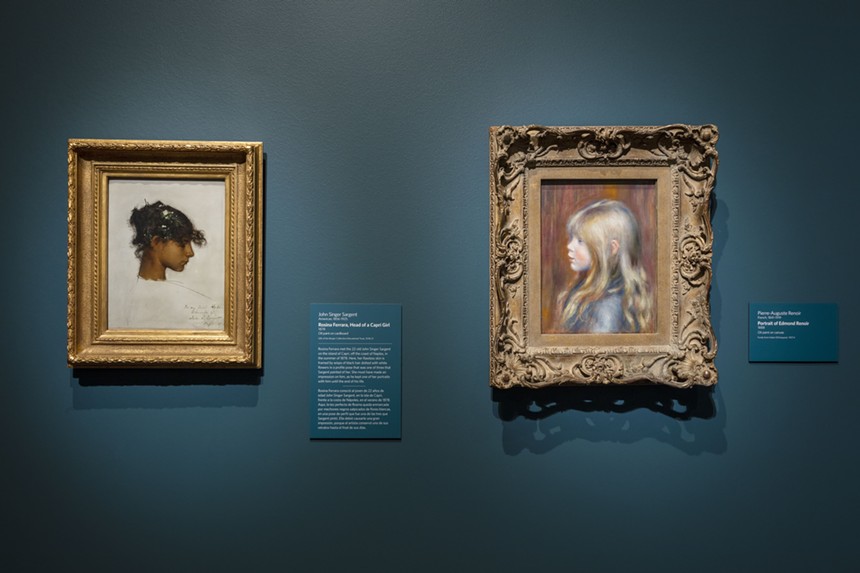
A John Singer Sargent (left) and a Pierre-Auguste Renoir (right) in 19th Century European and American Art at the Denver Art Museum.
Courtesy of the Denver Art Museum
Of course, these aren’t regular times, so the crowds are thin by design — all the better for visitors to see the paintings. And since it’s a new permanent European department gallery, there will be plenty of time for everyone who's interested to catch the show.
For timed tickets and more information, go to the Denver Art Museum website.

